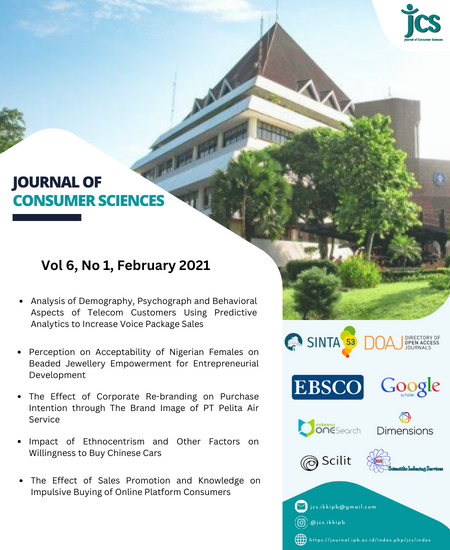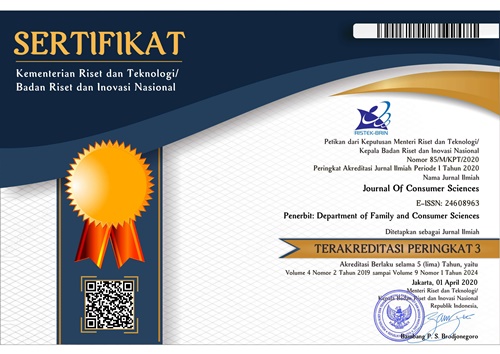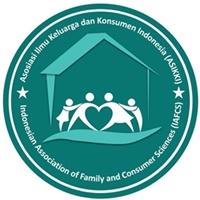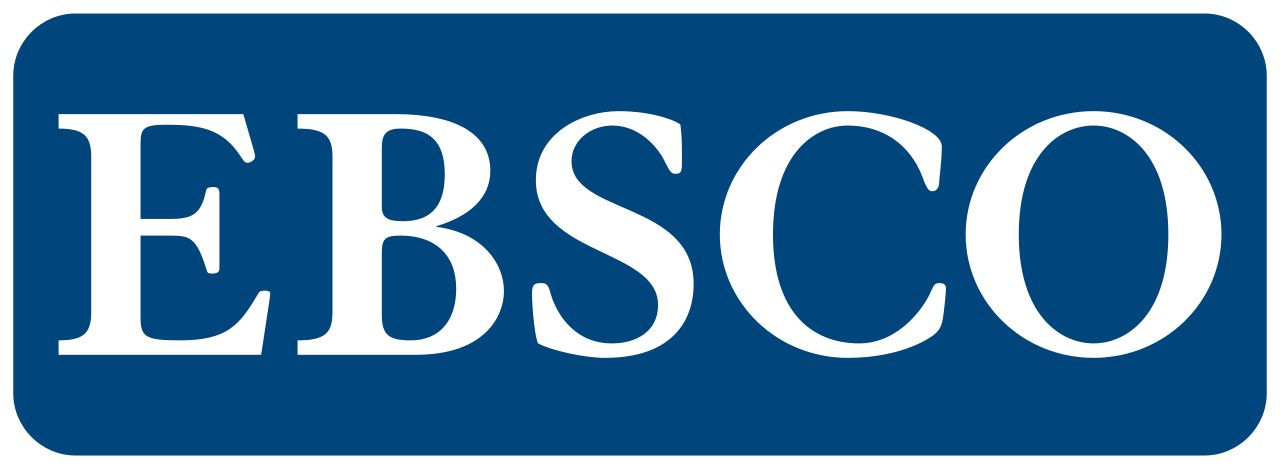Analysis of Demography, Psychograph and Behavioral Aspects of Telecom Customers Using Predictive Analytics to Increase Voice Package Sales
Abstract
In 2018, Telkomsel's core business shifted its main services from Telephone and SMS services to Data and Digital services, since a declining trend of revenue starting 2014. However, telephone service still contributed 28.4% to the revenue and was the second largest, while SMS gave 4.1%. This research predicts voice package buyers using predictive analytics to identify customer profiles and significant variables to form appropriate target customer segmentation. Logistic regression was used to predict customers who would buy voice packages using 15 input variables. Next, analytics was done by dividing the data into 70% training data sets and 30% testing data obtained from customer voice package user data. The model accuracy gained 97.2%, and the top seven significant variables were formed. Then five clusters of customer segmentation were formed based on top significant variables using the K-Means clustering technique. Based on the results of the prediction model and clustering, behavioral targeting was conducted to provide targeted gimmick products based on five segmentations formed, and then it was divided into two main target customers by considering the similarity of behaviors based on revenue voice, minutes of voice usage, voice transactions, day of voice usage and data payload, thus it was more targeted.
References
Boerman, S., Kruikemeier, S., & Borgesius, F. (2017). Online Behavioral Advertising: A Literature Review and Research Agenda. Journal of Advertising, 46, 363-376. 10.1080/00913367.2017.1339368.
Chaffey. D (2013), "Definitions of E-marketing vs Internet vs Digital marketing", Smart Insight Blog,
February 16.
Chaffey. D (2013), "Definitions of E-marketing vs Internet vs Digital marketing", Smart Insight Blog, February 16.
Dangi, H., & Malik, A. (2017). Personalisation in marketing: An exploratory study. International Journal of Internet Marketing and Advertising, 11., 124. Doi: 10.1504/IJIMA.2017.084079.
de Bellis, E., Hildebrand, C., Ito, K., Herrmann, A., & Schmitt, B. (2019). Personalizing the Customization Experience: A Matching Theory of Mass Customization Interfaces and Cultural Information Processing. Journal of Marketing Research, 56(6), 1050-1065. Doi: https://doi.org/10.1177/0022243719867698
Ebrahim, R., Ghoneim, A., Irani, Z., & Fan, Y. (2016). A brand preference and repurchase intention model: the role of consumer experience. Journal of Marketing Management, 32(13-14), 1230-1259. Doi: /https://doi.org/10.1080/0267257X.2016.1150322
Franedya, R. (2019, May 01). Industri Telco Tumbuh Negatif, Ini Strategi Bisnis Telkomsel [Telco Industry Grows Negatively, This Is Telkomsel's Business Strategy]. Retrieved from: https://www.cnbcindonesia.com/tech/20190501182321-37-69945/industri-telco-tumbuh-negatif-ini-strategi-bisnis-telkomsel
Fudin, U. (2018). Meningkatkan Jumlah Pembeli Paket data Di MyTelkomsel Apps Dengan Predictive Analytics [Increasing the NUMBER of Data Package Buyers on MyTelkomsel Apps with Predictive Analytics]. Unpublished Thesis: Telkom University. Retrieved from: https://openlibrary.telkomuniversity.ac.id/home/catalog/id/147181/slug/meningkatkan-jumlah-pembeli-paket-data-di-mytelkomsel-apps-dengan-predictive-analytics.html
Goldsmith, R. E. (1999). The personalised marketplace: beyond the 4Ps. Marketing Intelligence & Planning.
Hjort, K., Lantz, B., Ericsson, D., & Gattorna, J. (2016). Customer Segmentation Based on Buying and Returning Behaviour: Supporting Differentiated Service Delivery in Fashion E-Commerce. In Developments in Logistics and Supply Chain Management (pp. 153-169). Palgrave Macmillan, London.
Hosmer Jr, D. W., Lemeshow, S., & Sturdivant, R. X. (2013). Applied logistic regression (Vol. 398). John Wiley & Sons.
Kotu, V. & Deshpande, B. (2015) Predictive Analytics and Data Mining, Business Intelligence. Waltham: Morgan Kaufmann Publishers.
Kotler, P., & Armstrong, G. (2014). Principles of Marketing. New Jersey: Prentice Hall.
Kotler, P., & Lane, K (2016). Marketing Management (Global Edition ed.). USA: Pearson Education Limited. ISBN 978-0-13-385646-0
Kramer, T. (2007), "The effect of measurement task transparency on preference construction and evaluations of
personalized recommendations", Journal of Marketing Research, Vol. 44 No. 2, pp. 224-233.
Kurniawan, S. (2019). Increasing Number of Active Data User in Telkomsel Using Predictive Analysis. Unpublished Thesis: Telkom University.
Lee, H. H., & Chang, E. (2011). Consumer Attitudes Toward Online Mass Customization: An Application of Extended Technology Acceptance Model. Journal of Computer-Mediated Communication, 16(2), 171-200. Doi: https://doi.org/10.1111/j.1083-6101.2010.01530.x
Lin, W., Ke, S., & Tsai, C. (2017). Top 10 data mining techniques in business applications: a brief survey. Kybernetes, 46, 1158-1170. Doi : https://doi.org/10.1108/K-10-2016-0302
Ma, Y., Chen, G., & Wei, Q. (2017). Finding users preferences from large-scale online reviews for personalized recommendation. Electronic Commerce Research, 17(1), 3-29. https://doi.org/10.1007/s10660-016-9240-9
Nisbet, R., Elder, J., & Miner, G. (2009). Handbook of statistical analysis and data mining applications. Academic Press.
Noor, I. G. W. A., Ariyanti, M., & Alamsyah, A. (2019, May). Telecom Customer’s Segmentation Using Decision Tree to Increase Active Electronic Money Subscribers. In 1st International Conference on Economics, Business, Entrepreneurship, and Finance (ICEBEF 2018) (pp. 628-632). Atlantis Press.
Ozcelik, A & Varnali, K. (2018). Effectiveness of online behavioral targeting: a psychological perspective. Electronic Commerce Research and Applications, 33, 100819. Doi: 10.1016/j.elerap.2018.11.006.
Paço, A & Alves, H.,Shiel, C & Filho, W. (2014). An analysis of the measurement of the construct "buying behaviour" in green marketing. Journal of Integrative Environmental Sciences, 11(1), 55-69. Doi: 11. 10.1080/1943815X.2014.894082.
Pal, J., & Bhattacherjee, V. (2015). Fuzzy Rule Based Classifier for Software Quality Data. Journal of Theoretical and Applied Information Technology, 72(1), 58-66. ISSN: 1992-8645.
Shen, A. (2014). Recommendations as personalized marketing: insights from customer experiences. Journal of Services Marketing, 28(5), 414-427. Doi: 10.1108/JSM-04-2013-0083.
Simonson, I. (2005), "Determinants of customers' response to customized offers: conceptual framework and research propositions", Journal of Marketing, Vol. 69 No. 1, pp. 32-45
Swastha, B., & Irawan. (2005). Asas-asas Marketing. Liberty: Yogyakarta.
Telkomsel Annual Report. (2019). Retrieved from https://telkomsel.com/about-us/investor-relations
Tuckwell, K. J. (2016). Think Marketing. Canada: Pearson Canada Inc.
Vesanen, J. (2005). What is personalization?: a literature review and framework.
Wendler, T., & Gröttrup, S. (2016). Data mining with SPSS modeler: theory, exercises and solutions. Springer.
Widiyaningtyas, T., Prabowo, M. I. W., & Pratama, M. A. M. (2017, September). Implementation of K-means clustering method to distribution of high school teachers. In 2017 4th International Conference on Electrical Engineering, Computer Science and Informatics (EECSI) (pp. 1-6). IEEE. Doi: https://doi.org/10.1109/EECSI.2017.8239083
Authors who publish with this journal agree to the following terms:
- Authors retain copyright and grant the journal right of first publication with the work simultaneously licensed under a

This work is licensed under a Creative Commons Attribution 4.0 International License. that allows others to share the work with an acknowledgement of the work's authorship and initial publication in this journal. - Authors are able to enter into separate, additional contractual arrangements for the non-exclusive distribution of the journal's published version of the work (e.g., post it to an institutional repository or publish it in a book), with an acknowledgement of its initial publication in this journal.
- Authors are permitted and encouraged to post their work online (e.g., in institutional repositories or on their website) prior to and during the submission process, as it can lead to productive exchanges, as well as earlier and greater citation of published work (See The Effect of Open Access).











